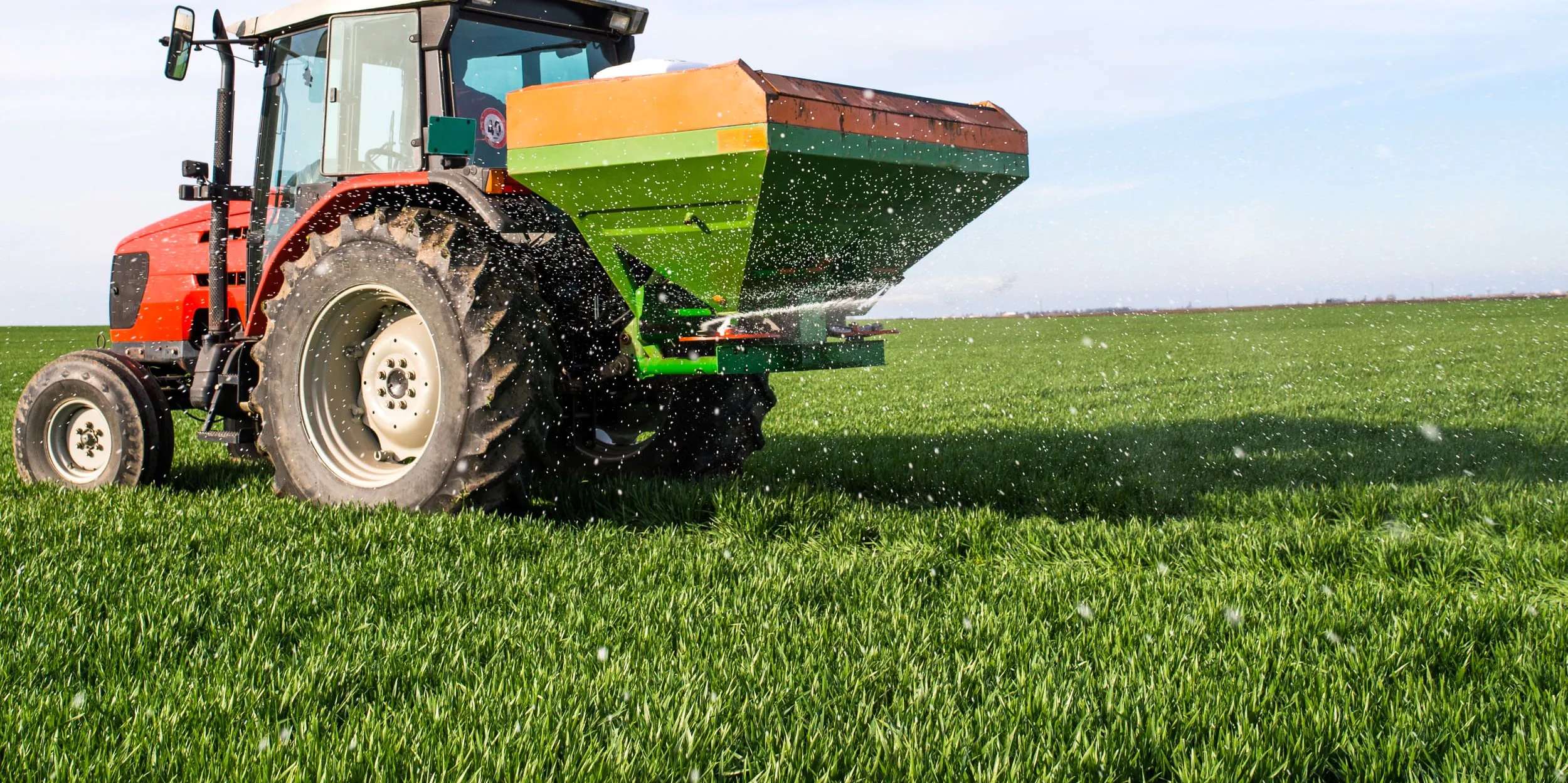The past few years have been fraught for the fertilizer and agriculture industries. High natural gas prices, supply chain issues, and the Russian invasion of Ukraine have all taken a toll on fertilizer industry production, which in turn has impacted crop production around the world. Nitrogen, phosphates, potash, and sulfates, all important materials for the production of fertilizers, have been in high demand and short supply.
High Prices and Supply Shortages
Natural gas is a key input in some synthetic fertilizers — particularly nitrogen and ammonia fertilizers, where it accounts for roughly 80% of production costs. So when natural gas prices surged in 2021, the price of chemical fertilizers rose as well. China put a quota in place on exports of fertilizer in order to ensure its availability domestically, reducing its availability on the global market. In 2022, gas prices in Europe rose 200%, though they have since fallen somewhat as countries acquired gas from other sources and began to build stockpiles.
The war in Ukraine compounded the problem. Russia has traditionally been a key supplier of not only natural gas, but also of several chemical fertilizers and their components. The country accounts for roughly 45% of the world’s ammonia nitrate supply, 18% of the potash market, 15% of nitrogen output, and 14% of the phosphate fertilizer market. Belarus is also a significant source of potash and other fertilizer materials.
Russia’s restriction on the supply of natural gas to Europe, combined with Western sanctions against companies in Russia and Belarus, therefore hit the fertilizer industry hard. In some cases, raw material prices for synthetic fertilizers rose as high as triple what they were at the start of the pandemic. Other countries have been able to step in to help supply certain resources, but time was needed to ramp up production and some components — such as potash and natural gas — are only available in certain areas.
A Global Impact
Although some nations have been reducing their usage of chemical fertilizers over the past decade and a half, many emerging countries still rely heavily on them to improve crop yields and sell their products at a reasonable price. Higher prices and reduced availability hit these countries particularly hard, though farmers in other nations around the world have also felt the impact. Low availability and high costs meant that many farmers have had to ration their fertilizer use, reducing crop yields and impacting the global food supply.
One of the ways in which the fertilizer shortage has impacted farmers is the selection of crops being grown. For example, soy needs less fertilizer than corn does, so there has been more soy planted and less corn, leading to a supply imbalance ultimately impacting other industries that use both of those crops.
Farmers who aren’t able to pivot this way have had to be more selective in where and how they use their fertilizer, prioritizing higher-paying crops or those that have the highest likelihood of surviving and flourishing. Lower fertilizer use means a risk of lower crop yields. High fertilizer prices also mean needing to reduce spending in other areas, which can disrupt other farm products and processes. And of course higher expenses in the production of food leads to higher prices for that food, with the potential to cause or exacerbate food insecurity.
Some farmers have turned to natural fertilizers like manure in order to provide nutrients to their crops. In the US, demand for animal waste rose substantially, and equipment for spreading manure have been seeing much higher sales than usual. Manure use does have its downsides, however, as runoff can pollute waterways if not properly managed.
Initiatives for Fertilizer Industry Adaptation and Recovery
Farmers, businesses, and countries have been addressing the fertilizer shortage and high prices in a variety of ways. New types of fertilizer, different application methods, and governmental initiatives have all helped to mitigate the impact of the shortage.
Several countries have stepped up to help replace the deficit left by Russia and Belarus. For example, while those two countries have been important suppliers of potash, they aren’t the only places where potash is found. Canada is the world’s largest potash producer, and the country is now ramping up production in order to compensate for the current shortfall. International businesses are also viewing this as an investment opportunity and increasing their presence in Canada. The country last year announced plans to increase potash production by 20% over the next five years, and mining company BHP has made a $7.5 billion commitment to expand its mining efforts in the province of Saskatchewan by 2027.
Meanwhile, the Canadian province of Ontario is investing in 10 new projects in order to address fertilizer shortages. The government is funding a Fertilizer Challenge to support Ontario-made fertilizer products and technology, targeting projects that will be available by spring of next year, reducing reliance on imported fertilizers.
In Brazil, the country imports 80% of its nitrogen and phosphorus fertilizer, leaving it quite vulnerable to international shortages. But Brazil also has potash deposits available to be mined, though production has declined over the past several years as the country began to rely more heavily on imports. Now, a Brazilian company is working to change that. Brazil Potash has acquired the rights to undeveloped potash deposits in an effort to reduce dependency on imports.
In the United States, the Department of Agriculture (USDA) last fall announced $500 million in grants to increase domestic fertilizer production in order to mitigate the impact of shortages and price hikes. The Fertilizer Production Expansion Program supports “independent, innovative and sustainable” fertilizer production by and for US operations, as well as the manufacture of alternative products. The aim is to support independent producers in order to increase competition in the US market and reduce reliance on foreign supply.
Other countries and global organizations are developing their own initiatives to reduce reliance on any single fertilizer source, mitigate the impacts of the current shortage, and increase independence over the coming years. Food security is an important priority, especially in poorer nations and communities. Fertilizer subsidies and other support systems have been put in place to help keep farmers afloat.
New technology has also seen a boost over the past two years, both in terms of R&D as well as funding and adoption. Many big companies are either developing their own solutions or partnering with other businesses to create, implement, or ramp up solutions that don’t rely on the limited materials that are currently in short supply. Tesco, for example, is partnering with some of its largest field vegetable suppliers to roll out a low-carbon fertilizer that will largely be manufactured in the UK from organic waste and other materials such as algae. This will reduce reliance on imported fertilizer as well as cut down on emissions.
There are many other fertilizer industry innovations that are now receiving increased attention. Precise irrigation and fertilization systems that use sensors and data analysis to deliver only as much as the plants need, fertilizer with a coating that allows more nutrients to enter the soil and less to be released into the environment, and much more.
The Fertilizer Industry in Recovery
Last year saw fertilizer prices reach their peak, but since then the market has begun to improve. While it will be a slow recovery — possibly two or three years — the prices for most types of fertilizer are already beginning to return to normal, or in some cases even dip below historical averages. Nitrogen fertilizers remain volatile given their need for natural gas and the continuing conflict between Russia and Ukraine. Potash prices are falling as supplies from other sources increase, but phosphate prices have remained high due to reduced exports from China, though this may change in the coming months as Chinese domestic consumption falls for the season. There are still challenges ahead for both the fertilizer industry and the agricultural industry, as demand changes and customers find alternative sources, new products, and more efficient technology. Some individual farms and even entire countries, having turned elsewhere for fertilizer options, may not return to their previous buying and usage patterns, which could further impact the global market. Innovation is key in the global fertilizer market as businesses look for more efficient and sustainable options for improving crop yield.



